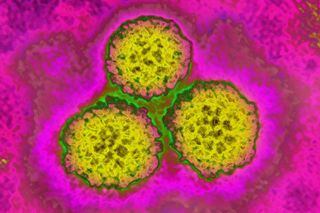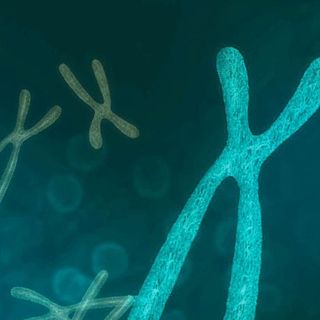
HPV May Contribute to Cardiovascular Disease as Well as Cervical Cancer
Yet another reason to vaccinate.

The same strains of human papillommavirus — the most common sexually transmitted infection globally — that can develop into cervical cancer may also be a risk factor in cardiovascular disease, new research suggests.
After adjusting for other known risk factors including body mass index, weight-to-height ratio, smoking, alcohol consumption, exercise levels, family history and more, women infected with one of these high-risk strains of HPV were 22% more likely to develop cardiovascular disease than women without an HPV infection, concluded the study published in Circulation Research, a journal of the American Heart Association. When an HPV infection occurred in women with obesity and metabolic disorder, also well-known risk factors for cardiovascular disease, their likelihood of developing CVD jumped by 66% and 50%, respectively.
Related on The Swaddle:
What You Need to Know About Heart Disease and Heart Attacks in Women
Cardiovascular disease is an umbrella term for a variety of conditions that affect the heart or blood vessels, including heart attack and stroke.
While the study followed across five years 63,411 Korean women, with an average age of 40 and without cardiovascular disease, to arrive at the conclusion, the findings hold implications for India. HPV prevalence in the country is unknown, thanks to stigma around sexually transmitted infections and the fact that HPV often has no obvious symptoms, and prevention efforts have been minimal; poorly run vaccine trials resulting in harm to children, vaccine misinformation, and discomfort with HPV’s method of transmission (sexual contact) have combined to make parents wary of vaccinating children at the age when immunization against the virus is most effective.
Related on The Swaddle:
Cost, Side Effects and Influence on Teens’ Sex Lives Keep Parents Wary of HPV Vaccine
Better understood is the burden of cardiovascular disease in India. It is responsible for 28.1% of all deaths in India, per 2016 statistics, the most recent available. “CVD has emerged as the leading cause of death in all parts of India, including poorer states and rural areas,” ran a report in Circulation, another journal of the American Heart Association, in the same year. Contributing conditions that may be compounded by an HPV infection, such as obesity and diabetes, are also on the rise in India.
“A better understanding of high-risk HPV as a risk factor for cardiovascular disease and possible combined effects of high-risk HPV, obesity and metabolic syndrome in increasing cardiovascular disease risk may help improve preventive strategies and patient outcomes,” said Dr Seungho Ryu, MD and PhD, a senior coauthor of the study and professor at Kangbuk Samsung Hospital, Sungkyunkwan University School of Medicine, in Seoul, South Korea.
Dr Seungho says more research is necessary to confirm that the same strains behind cervical cancer also contribute to cardiovascular disease. And population-wide studies are needed, too, Dr Seungho says, to determine whether HPV vaccination corresponds with a drop in cardiovascular disease incidence, as it has lowered cervical cancer rates in countries with established vaccine programs.
Liesl Goecker is The Swaddle's managing editor.
Related


The Most Accurate Screening for Fetal Abnormalities Has Yet to Catch On. Why?
